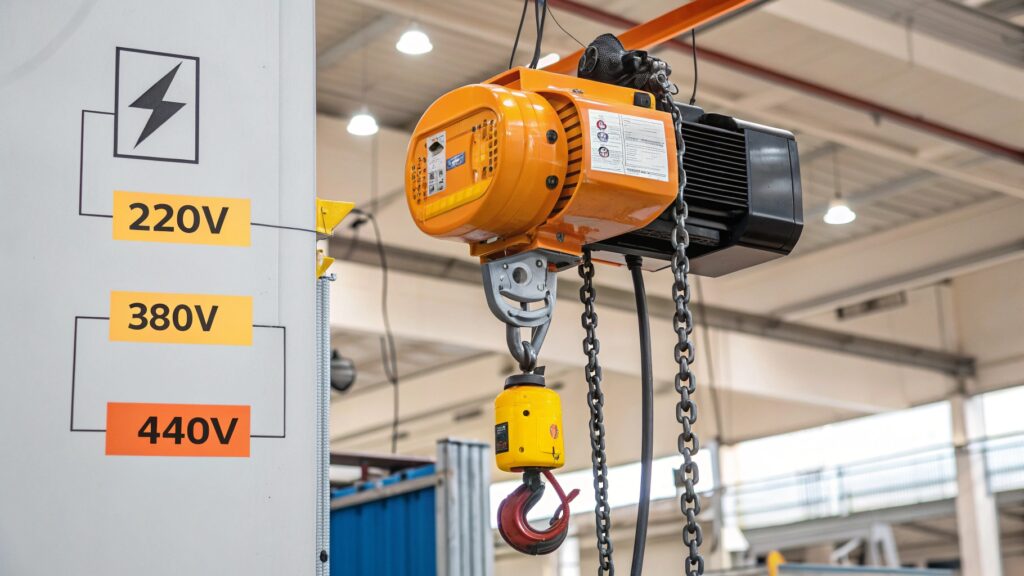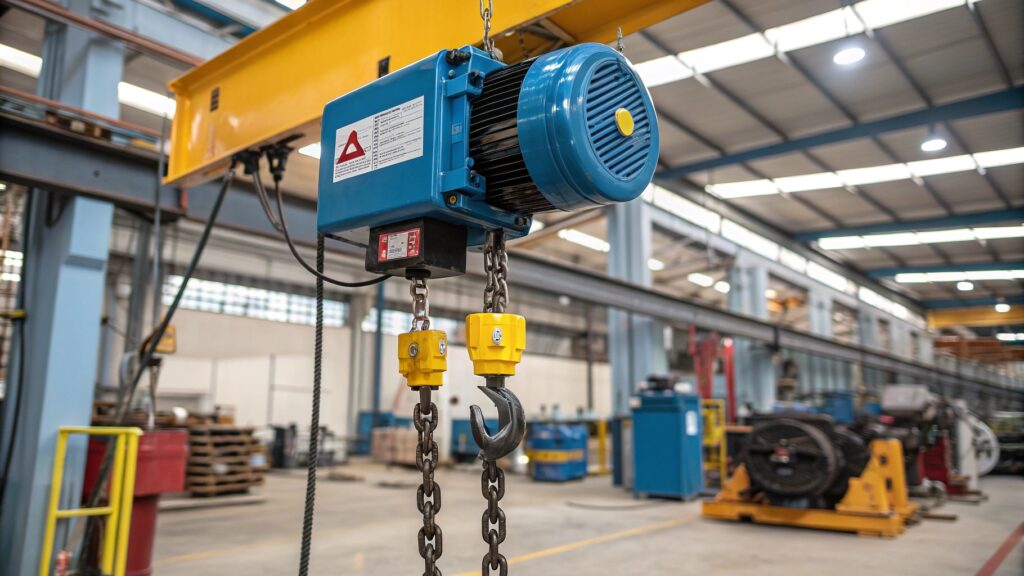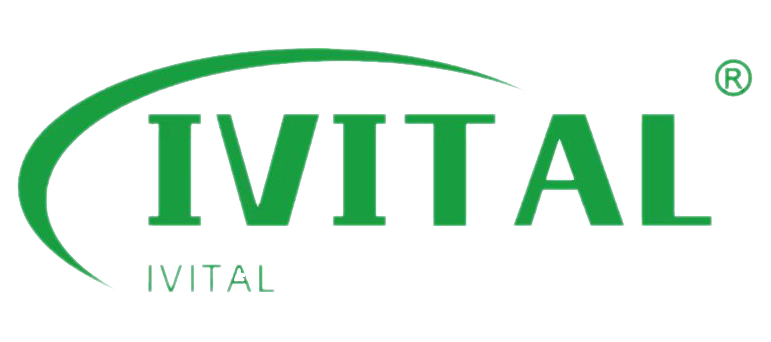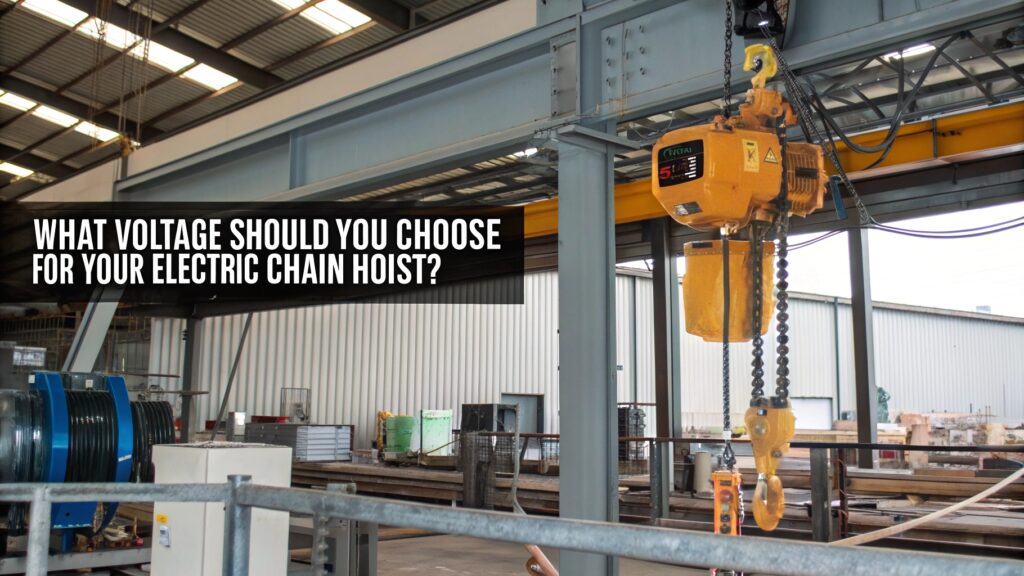
Choosing the correct voltage for your electric chain hoist is critical to ensure smooth operation and avoid performance issues. Selecting the wrong voltage can lead to overheating, equipment failure, and even impact overall operational efficiency. Getting the voltage right ensures your hoist runs optimally in any setting.
Electric chain hoists typically operate at various voltages, including 220V, 380V, and 440V, and selecting the right voltage is essential to match your electrical system. Different voltages are suitable for different load requirements and work environments.
When selecting the voltage, you may encounter some common pitfalls. In the following sections, we’ll dive into these issues and provide practical advice to help you make an informed choice.
Table of contents
- What Voltage is Needed for Electric Hoists?
- What is the Difference Between 220V, 380V, and 440V Electric Hoists?
- Common Mistakes to Avoid When Choosing the Voltage for Your Electric Hoist
- How to Ensure Your Electric Hoist’s Voltage is Compatible with Your Electrical System?
- Conclusion
What Voltage is Needed for Electric Hoists?
When selecting an electric hoist, the voltage specification significantly affects its efficiency and safety. Understanding which voltage suits your work environment will help you make the right decision when buying.
Electric hoists commonly come in 220V (single-phase), 380V (or 400V, three-phase), and 440V (three-phase), and the choice depends on load requirements and your electrical system.

Important Considerations When Choosing Electric Hoist Voltage
When selecting a voltage, it’s not only about compatibility with your electrical system but also about your load requirements. Most industrial environments use 380V or 440V three-phase for heavy-duty applications, while lighter tasks can use 220V single-phase.
Additionally, you must check whether your electrical system can support the chosen voltage. For example, three-phase power is often used for higher power needs, while single-phase is more suitable for lighter operations.
What is the Difference Between 220V, 380V, and 440V Electric Hoists?
Different voltages are suitable for different work loads and operational requirements. Understanding these differences will help you choose the most suitable hoist for your needs.
220V electric chain hoists are ideal for lighter loads, usually for smaller factory or home operations. 380V and 440V are designed for heavier loads, typically used in large-scale industrial applications.
How to Choose the Right Voltage for Your Application
First, understanding your working environment is the first step in choosing the right voltage. If you’re in a small facility with lighter loads, a 220V single-phase may be sufficient. However, for heavier loads and more frequent use, opting for 380V or 440V three-phase will be more reliable.
Moreover, different voltage requirements may affect the hoist’s performance, so be mindful of your electrical system’s stability and capacity when making the choice.
Common Mistakes to Avoid When Choosing the Voltage for Your Electric Hoist
When selecting an electric hoist, many people make common mistakes. Understanding and avoiding these mistakes will help you make a smooth and informed choice.
Common mistakes include mismatching voltage, failing to consider the compatibility of the power system, and ignoring load requirements. Always confirm that the hoist voltage is compatible with your electrical system.
Case Studies of Voltage Selection Mistakes
For example, a company once selected a 380V three-phase hoist and connected it to a 220V system. As a result, the hoist malfunctioned, and a short circuit occurred. Since then, many companies have placed more importance on ensuring voltage compatibility with the power system.
How to Ensure Your Electric Hoist’s Voltage is Compatible with Your Electrical System?
Ensuring that the electric hoist voltage matches your electrical system is crucial. Different voltages may require different wiring methods or converters.
When selecting a voltage, you need to check the maximum voltage supported by your power system. For instance, three-phase power may need different wiring configurations, while 220V single-phase systems are simpler to manage.
The Importance of Electrical System Selection
The stability of your electrical system is crucial for the electric chain hoist. If the power system is unstable, even choosing the correct voltage might lead to poor performance or equipment damage. Ensuring that your power system matches the hoist’s needs will prolong the life of your equipment.
Conclusion
Choosing the right voltage for your electric chain hoist is essential for safety and efficiency. By understanding the different voltage options and ensuring compatibility with your electrical system, you can ensure smooth hoist operation and avoid potential risks.



